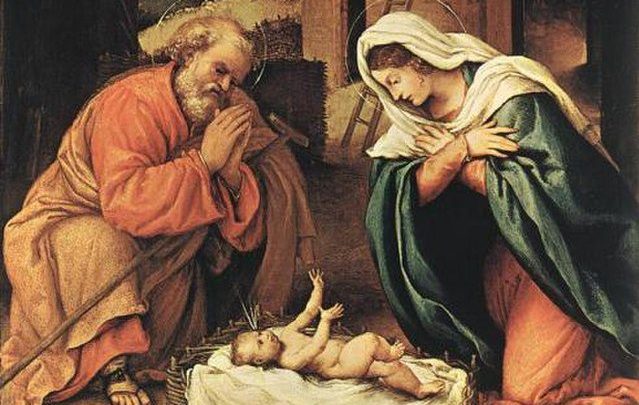A Sign of Contradiction

The Gospels of Sts. Matthew and Luke are the only two of the canonical four to record Christ’s Nativity. Both trace His ancestry in serpentine paths from Abraham to Joseph. Matthew and Luke alone refer to the virgin birth, and their Gospels alone are the source of cherished yuletide images: wise men, mangers, and shepherds keeping watch over their flocks by night.
St. Mark’s Gospel is terse. It opens with the Evangelist’s proclamation of “the gospel of Jesus Christ, the Son of God,” followed by a quote from the prophet Isaias—“Behold, I send my angel before thy face, who shall prepare the way before thee.” St. John the Baptist follows, through whom we meet Christ—not a child, but a man, whose shoes the Baptist is “not worthy to stoop down and loose.” Mark’s Christ walks on water, heals the sick, and rises from the dead. The nobility of His birth need hardly be stated—from whence could such be born?
Neither does St. John describe Christ’s nativity in his Gospel; rather, John reaches back before the foundation of the world, echoing the first three words of Genesis as he begins: “In the beginning was the Word, and the Word was with God, and the Word was God.” The Baptist will say verses later that Christ, despite His late birth, “is preferred before me: because he was before me.”
The Christ of Matthew, Mark, Luke, and John—the composite God-man revealed in all four—is a sign of contradiction from birth. Born a King in a trough of beasts. A wordless Infant hunted by the mighty king. The Creator of the world entering His creation a peasant. A King whose kingdom is not of this world.
These days we are told that this Christ implores us to be “open-minded.” That He came not to bring a sword, but peace. We look in the manger and see a harmless savior who will ask of us nothing, least of all conversion, sacrifice, death to all that we know and hold dear.
We look at the docile babe in Bethlehem and assume He would never tell us to hate our parents, to sell what we have, to rend not asunder that which God hath joined. Surely the child will one day tell us that all who are called are chosen, that the path to eternal life is wide, that all will inherit the Kingdom of God. This child, we mutter madly, would never demand obedience, would never say that “no one”—not a single, solitary one—”comes to the Father but by me.”
Men look at this child and see themselves: a socialist, a royalist, a libertine, a prude. They see the child as an impressive teacher, a tolerant, broad-minded sap, one way among many on the broad and boundless road to peace. They see a useful mask for imperial ambition. They see anything but the unbearable image of the newborn Christ, piercing like the midday sun, beckoning all to pick up the cross and follow Him to Golgotha so they might share in the redemption of mankind.
While St. John does not recount the Lord’s Nativity, he alone records Christ’s words in the praetorium before Pontus Pilate, announcing the purpose of His birth:
“For this was I born, and for this came I into the world; that I should give testimony to the truth. Every one that is of the truth, heareth my voice.”
His voice is perhaps heard loudest at Christmas; it rings through castles and dungeons, churches and saloons, the halls of princes and the bowels of prison. O come, let us adore Him.
Comments